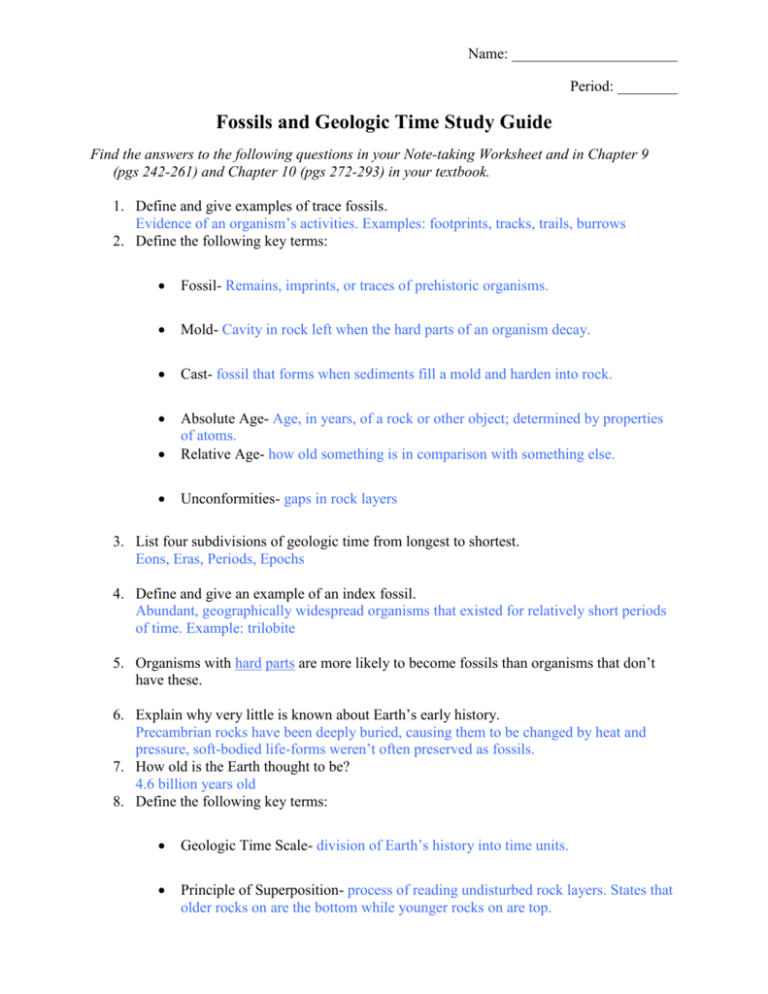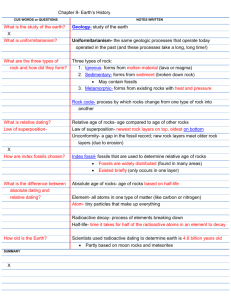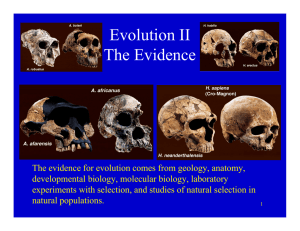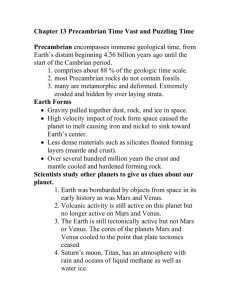Energy and Waves Review Sheet/Study Guide
advertisement

Name: ______________________ Period: ________ Fossils and Geologic Time Study Guide Find the answers to the following questions in your Note-taking Worksheet and in Chapter 9 (pgs 242-261) and Chapter 10 (pgs 272-293) in your textbook. 1. Define and give examples of trace fossils. Evidence of an organism’s activities. Examples: footprints, tracks, trails, burrows 2. Define the following key terms: Fossil- Remains, imprints, or traces of prehistoric organisms. Mold- Cavity in rock left when the hard parts of an organism decay. Cast- fossil that forms when sediments fill a mold and harden into rock. Absolute Age- Age, in years, of a rock or other object; determined by properties of atoms. Relative Age- how old something is in comparison with something else. Unconformities- gaps in rock layers 3. List four subdivisions of geologic time from longest to shortest. Eons, Eras, Periods, Epochs 4. Define and give an example of an index fossil. Abundant, geographically widespread organisms that existed for relatively short periods of time. Example: trilobite 5. Organisms with hard parts are more likely to become fossils than organisms that don’t have these. 6. Explain why very little is known about Earth’s early history. Precambrian rocks have been deeply buried, causing them to be changed by heat and pressure, soft-bodied life-forms weren’t often preserved as fossils. 7. How old is the Earth thought to be? 4.6 billion years old 8. Define the following key terms: Geologic Time Scale- division of Earth’s history into time units. Principle of Superposition- process of reading undisturbed rock layers. States that older rocks on are the bottom while younger rocks on are top. Name: ______________________ Period: ________ Half-life- time it takes for half the atoms in an isotope to decay. 9. List some important events for the each of the following time periods: Precambrian Time- Little is known because most Precambrian organisms lacked hard parts. Rocks from this time were deeply buried and changed by heat and pressure. Mesozoic Era- Pangaea separated, Dinosaurs evolved, Gymnosperms and Angiosperms appeared, a great extinction caused by a comet or an asteroid occurred. Paleozoic Era- Amphibians evolved to survive in water and on land, Reptiles evolved from amphibians, a great extinction occurred at the end of the era. Cenozoic Era- Many mountain ranges formed, humans appeared, 10. Draw and label a diagram of the rock cycle. Metamorphic rock is formed from heat and pressure Sediments are formed by weathering and erosion. Magma is formed by melting. Igneous rock is formed when magma cools. Sedimentary rock is formed by cementation and compaction.








